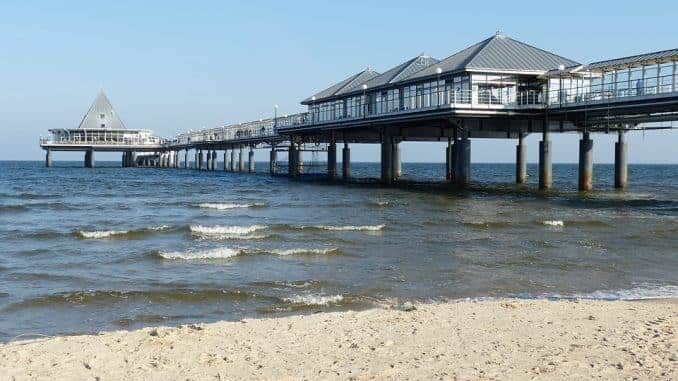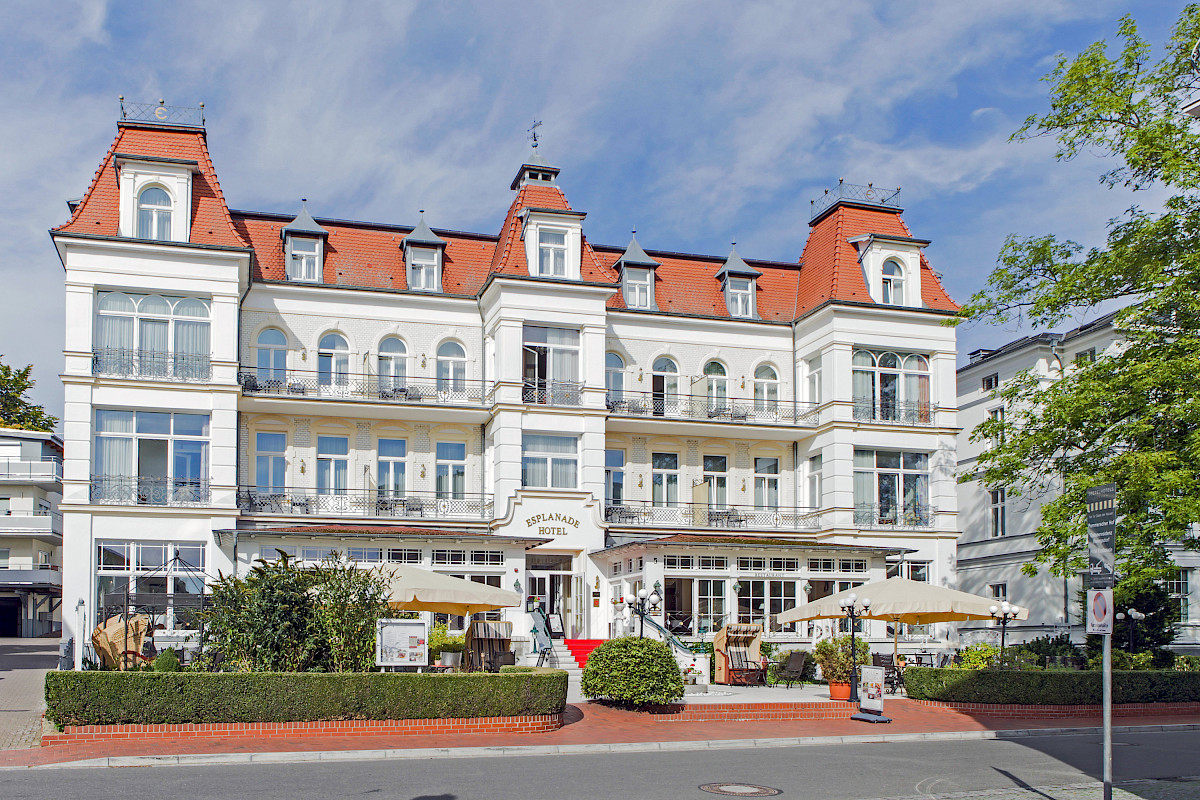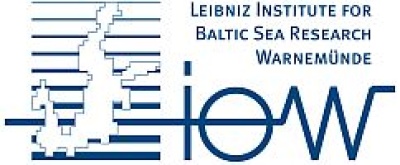6th Baltic Earth Conference 2026
Event

- LocationHeringsdorf, Germany
- Time13 - 17 April 2026
- HostInternational Baltic Earth Secretariat at IOW and IOPAN
Background
The Baltic Earth scientific network strives to achieve an improved Earth System understanding of the Baltic Sea region as the basis for science-based management in the face of climatic, environmental and human impact in the region. Baltic Earth brings together a broad international research community around scientific issues relevant for societal efforts to achieve sustainability in the region. Baltic Earth targets the atmosphere, land and marine environment of the Baltic Sea, its drainage basin and nearby areas with relevance for the Baltic Sea region. Baltic Earth has entered a new phase, called Baltic Earth 2.0. It is characterized by a new secretariat shared between Germany and Poland and revised research topics, which will be the foci of the conference.
- Topics
- Call for Papers/Programme
- Location/Venue Accomodation/Travel
- Registration/Fees Excursion/Timeline
- Organising Committees
1. Climate variability and teleconnections
The session examines how climate variability and teleconnections shape weather and climate across Northern Europe and the Baltic Sea region. We invite contributions that for example link the North Atlantic to the Baltic - from jet stream dynamics and storm track variability to ocean-atmosphere coupling to the North Atlantic Oscillation and other features of the climate system. We particularly welcome studies that focus on how these drivers project onto the seasonally varying background state, separate multiple time scales and address how they influence extremes, regional climate variability and their predictability.Submissions may use reanalyses (including century-scale products), CMIP/RCM ensembles and downscaling, forecast systems, process-based diagnostics, causal/attribution frameworks, and storyline or event-based approaches. Case studies that integrate observations and modelling, assess model skill for the Baltic domain, or connect teleconnections to impacts and services are encouraged.
2. Bridging Scales: From Small-Scale Turbulence to Basin-Wide Circulation
Oceanic processes span a wide range of spatial and temporal scales, from large-scale circulation and mesoscale fronts and eddies to submesoscale phenomena, internal waves, and small-scale turbulent mixing. However, the transfer of energy across these scales and the interactions among them are still not well understood. Moreover, the impact of small-scale processes on basin-wide circulation and its internal variability has yet to be fully elucidated, which is crucial for improving the predictability of oceans and seas. In this session, we invite observational, modeling and theoretical studies that explore physical processes within the water column across various spatial and temporal scales in the Baltic Sea and other sea areas. We particularly welcome studies that address cross-scale interactions, energy cascades, and the role of small-scale dynamics in shaping large-scale ocean circulation and variability.
3. Natural hazards and their impacts
The Baltic Sea region is one of the most populated and industrialized in Europe, making it highly vulnerable to natural hazards. This session addresses the causes and impacts of extreme hydro-meteorological, marine, and geological events in the region. We welcome contributions on forecasting and early warning, attribution to climate change, compound impacts on society, coasts, and ecosystems, as well as strategies for risk reduction and resilience building.
4. Sea level and coastal change
Coastal change in the Baltic Sea results from variations in wind, air pressure, and sea level, as well as waves, land uplift or subsidence, and other coastal drivers that mobilize and transport sediments. It is most evident during storms, sometimes accompanied by coastal flooding, when the sea level rises — a combined result of higher water levels driven by the dynamics of the North Sea and processes influenced by regional and local weather conditions, all against the backdrop of mean sea level rise. Studies on sea level variability, waves, land uplift, and subsidence, as well as their effects on sediment transport and coastal changes, are welcome.
5. Biogeochemistry of the Baltic Sea – Linking observations and modelling
Investigations on the marine and terrestrial carbon, nitrogen and phosphorus cycles and pathways towards an understanding of primary production mechanisms and organic matter transformations in the Baltic Sea; biogeochemical causes and effects of eutrophication, oxygen limitations and trace gas production, including microbiological processes; and modelling approaches to explain observations and project future changes are welcome.
6. Baltic Optics: Advancing Ocean Colour Science and Applications in the Baltic Sea
Understanding the optical properties of the Baltic Sea plays a key role in advancing our knowledge of ecosystem dynamics, phytoplankton community composition, carbon cycling and primary production. Yet, the region’s optical complexity—driven by strong gradients in salinity, coloured dissolved organic matter (CDOM), suspended matter, and phytoplankton diversity—poses persistent challenges for accurate observation and modelling of its optical state.
This session, Baltic Optics, invites contributions that address current and emerging questions around data needs, methodological gaps, and technological challenges in ocean colour research in the Baltic Sea. We welcome interdisciplinary work combining in situ observations, remote sensing, and numerical modelling, as well as developments in algorithm design, sensor calibration, and data assimilation.
Key Topics Include:
-
- Ocean colour data needs, validation, and quality assurance in optically complex waters
- Gaps and uncertainties in current observation networks and datasets
- Challenges of satellite ocean colour retrievals for coastal and inland waters
- Integrated observation approaches combining optical, biogeochemical, and physical measurement
- New and emerging technologies (e.g., hyperspectral sensors, autonomous platforms, AI-assisted analytics)
- Regional Baltic Sea case studies and applications for ecosystem management, water quality monitoring, and climate change assessments
7. Adaptive governance under multiple drivers of change in the Baltic Sea
The Baltic Sea and its catchment area is influenced by multiple interacting physical and socioeconomic drivers, including climate change, nutrient loading, economic development, demographic change, and technological innovation, among many others. These overlapping pressures create high uncertainty, making it difficult for governance systems to anticipate future conditions or to design and implement effective, long-term solutions. Modelling frameworks can play a critical role in adaptive management: creating different scenarios, exploring system dynamics, and participatory modelling approaches allow stakeholders to explore uncertainty, test alternative mitigation and adaptation strategies, and update management responses as conditions evolve.These approaches are increasingly being recognized as essential for managing under uncertainty and complexity. Yet their application in the Baltic context has been uneven, and lessons remain scattered. This session will explore how adaptive and model-informed approaches can help address the cumulative and interacting nature of multiple drivers, and how governance systems can build resilience in the face of change and uncertainty.
8. Marginal Seas – Humans and Environment
The Baltic Sea is one of the best-studied regional seas, and the research community possesses extensive paleo-environmental, prehistoric, and historical data. As a semi-enclosed sea bordering the open ocean, the Baltic Sea, like other comparable seas, is increasingly threatened by changing natural and anthropogenic impacts. This global pressure on marginal seas, their coasts, and their catchment areas is caused in particular by climate change and the overexploitation of their resources. The corresponding call for generally applicable sustainable management strategies and concepts has led to the integration of special scientific sessions into the program of the biennial Baltic Earth Conferences since 2022, focusing on the global comparison of the Baltic Sea with other marginal seas. We are continuing this initiative and invite marine geoscientists, life scientists, economists, historians, and stakeholders from around the world to the 2026 conference in Heringsdorf to exchange experiences and concepts for the sustainable management of marginal seas and to discuss them jointly to approach the UN Sustainable Development Goals.
9. Future projections of the Baltic Sea region
The Baltic Sea region is strongly impacted by anthropogenic climate change and ranks among the fastest warming seas globally. Continued warming is expected to lead to changes in temperature, salinity, and nutrient dynamics—affecting marine ecosystems and the services they provide to human society. Consequently, robust climate projections are essential for effective adaptation and planning. While global climate projections from the Climate Model Intercomparison Project (CMIP) are available, their spatial resolution is too coarse to adequately capture the complex characteristics of the Baltic Sea region, including its orography, land-sea distribution, and key regional processes. Moreover, many models struggle to accurately represent observed natural climate variability. This session welcomes contributions focusing on future climate projections for the Baltic Sea region, addressing the aforementioned challenges and strategies to overcome them.
10. Philosophical aspects of Baltic Sea Earth system research
During this session, we will explore and discuss the big ideas behind Earth System Science on a regional scale, such as the Baltic Basin or other marginal seas. The Earth System Science analyzes how physical, chemical, biological, and human processes interact. Understanding the Earth System in the Baltic Basin has been shaped by several key ideas that have been developed over the years, including, e.g., land uplift and glaciation, estuarine circulation, climate change and variability, acidification, eutrophication, fishing success, and human impacts. We invite presentations that address the initiation of one or more of these ideas, their progress, and their significance for understanding Earth System Science.
The dedicated call for papers is now open and includes detailed descriptions of the scientific sessions. Submissions are welcome on any of the topics listed above, as well as on related themes and programmes.
Both invited and contributed papers will be presented in plenary sessions and dedicated poster sessions. A special event will also be organised for early-career scientists.
Programme
The Conference Progamme and List of Participants will be published here as soon as it is available.
Icebreaker - 13 April 2026
Early Career Scientists' event - 14 April 2026
Excursion - 15 April 2026
Conference Dinner - 16 April 2026
Download files (programme, participants, proceedings)
- Preliminary Conference Programme is now available here
- List of Participants will be available here
- Conference Proceedings will be available here
Information/Guidelines for speakers and poster authors
Oral presentations
To keep sessions running smoothly and on time, please follow these timing and upload guidelines:
- Regular talks: 15 minutes total (12 minutes presentation + 3 minutes Q&A).
- Solicited presentations (session openers): 20 minutes total (17 minutes presentation + 3 minutes Q&A).
- Keynotes: 30 minutes total.
Please have your presentation ready on a stick by the morning of the presentation day, or during the lunch break if you present in the afternoon.
During the conference, there are no parallel sessions so that every participant can attend every session.
Poster presentations
Two dedicated poster sessions are planned. Details on the preferred poster size will be provided later/as soon as possible.
Each poster will also have a 1-slide, 1-minute speed talk (a brief oral introduction), so please prepare this slide in addition to your printed poster. We will inform you whether your speed talk is scheduled for Wednesday or Thursday.
Pier Heringsdorf


Heringsdorf, Usedom
Usedom, a picturesque island shared by Germany and Poland, is a true jewel of the Baltic coast. It offers over 40 km of sandy beaches and more than 1,900 hours of sunshine annually, as well as extensive areas of well-preserved natural landscapes. Notable sites include the historic spa towns of Bansin, Heringsdorf, and Ahlbeck, and the Heringsdorf Pier, Germany’s longest, extending 508 m into the sea. The island has a strong maritime heritage, with traditional fishing practices that continue to contribute to its local character and cuisine.
Travel
The town of Heringsdorf and the conference hotels are easily accessible by train, bus, car, or ferry. There are also direct flight connections from selected cities to Heringsdorf Airport.
The Conference Venue
The conference will be held in two hotels: Seetelhotel Villa Esplanade mit Aurora and Seetelhotel Pommerscher Hof, located in Heringsdorf on the Usedom Island.
Seetel Hotel Villa Esplanade
Seestraße 517424 Seebad Heringsdorf / Insel Usedom
Hotel website
Special conditions for conference participants (upon availability) are as follows:
111 € per room per night, including breakfast - Reservation by using the keyword "BalticEarth2026".
For reservations please send an email to: gruppenreservierung@seetel.de
Full availability until 1st February. After that, only a reduced number of rooms will be available at the advertised price:
60 rooms until 1 March
40 rooms until 1 April
20 rooms until 13 April
Usedom and location of the Conference Hotel in Heringsdorf
Registration and Fees
Register now!
380 € regular fee
290 € Early-career scientists (up to 7 years after PhD)
200 € accompanying person
All fees include VAT.
Please note that there is no financial support from Baltic Earth or the conference organizers.
The conference fee covers the conference venue, the abstract volume, the Icebreaker, morning and afternoon coffee and refreshments, daily lunches and the conference dinner. Accompanying persons will be charged for participation accordingly, conference meals are included.
Excursion
We will offer a guided excursion. Details will be provided here later.
Registration link
https://express.converia.de/frontend/index.php?folder_id=11155&page_id=
Timeline
| Call for Papers open | 24 October 2025 |
| Abstract deadline | 8 December 2025 |
| Notification to authors | 9 January 2026 |
| Preliminary programme available | 30 January 2026 |
| Registration and fee payment deadline | 12 February 2026 |
| Hotel Booking Deadline | 13 March 2026 |
| Conference | 13 - 17 April 2026 |
Scientific Committee
Juris Aigars, Latvia
Leonie Barghorn, Germany
Florian Börgel, Germany
Bronwyn Cahill, Germany
Evridiki Chrysagi, Germany
Inga Dailidienė, Lithuania
Georgia Destouni, Sweden
Matthias Gröger, Germany
Jan Harff, Germany
Kari Hyytiäinen, Finland
Jamie Jenkins, Finland
Karol Kuliński, Poland (Vice-Chair)
Taavi Liblik, Estonia
Urmas Lips, Estonia
Markus Meier, Germany (Chair)
Kai Myrberg, Finland
Susa Niiranen, Sweden
Kevin Parnell, Estonia
Piia Post, Estonia
Gregor Rehder, Germany
Itzel Ruvalcaba Baroni, Sweden
Marc Silberberger, Poland
Tarmo Soomere, Estonia
Martin Stendel, Denmark
Laura Tuomi, Finland
Ralf Weisse, Germany
Tamara Zalewska, Poland
Organising Committee
Sonja Ehlers, Germany
Katarzyna Koziorowska, Poland
Agnieszka Jędruch, Poland
Markus Meier, Germany
Berit Recklebe, Germany


